8. Cop 223 to 663 in Chungking Express
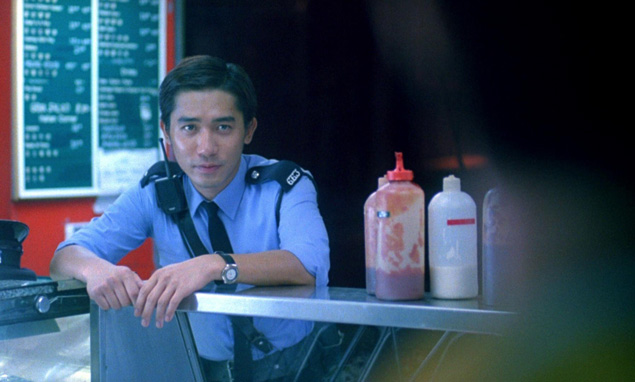
By the mid-1990s the multi-story trend was deeply ingrained into both the American indie circuit and the international circuit. Directors like Quentin Tarantino popularised it and executed it to great effect, but arguably it was presented at its most perfect and purest form in Wong Kar-Wai’s 1994 drama film.
The film consists of two stories told in sequence, each about a lovesick Hong Kong policeman mulling over his relationship with a woman. The first story features Cop 223 who is obsessed with the break-up of his relationship with a woman named May and his platonic encounter with a mysterious drug smuggler. The second features police officer Cop 663 who is roused from his gloom over the loss of his flight attendant girlfriend by the attentions of a quirky snack bar worker.
During this scene Cop 223 tries to hit on fast food stall assistant Faye only for Faye to fix her attention on Cop 663 and change the course of the film. It is a wonderfully satisfactory moment in which multiple storylines converge in brilliant and subtle fashion, only for them to depart but have a direct impact on the course of a film as a result. It is a great example of storytelling that is as wonderfully subtle as it is dramatically powerful.
7. The Copacabana in Goodfellas
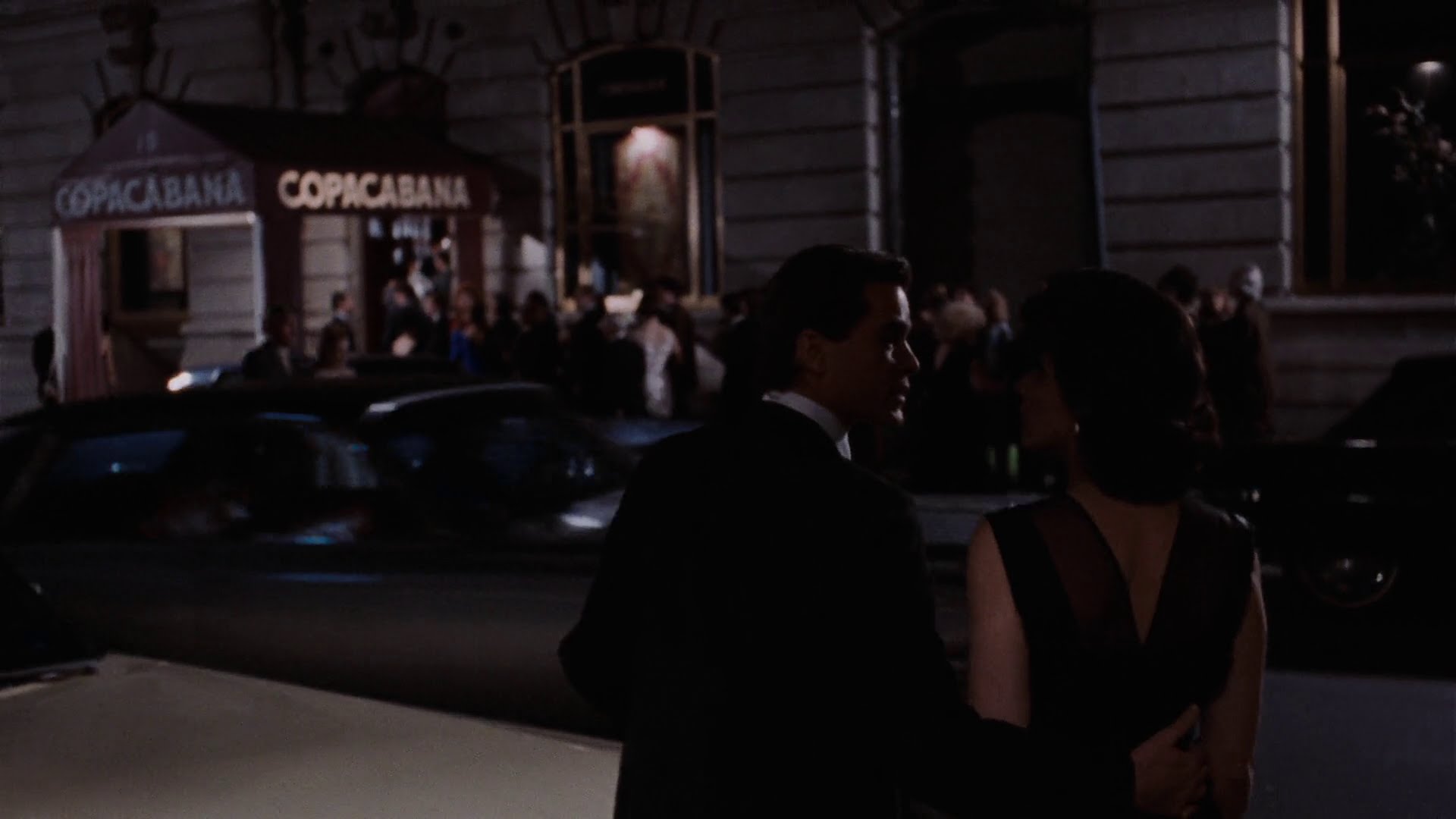
With one shot Scorsese seeks to answer the question of why anyone would be attracted to organised crime. As Henry Hill enters the Copacabana, handing out hefty tips to everyone he passes, winding his way through the orifices of the club before arriving at an especially reserved seat crime has never looked more seductive. After all this is the story of a man who always wanted to be a gangster and after witnessing this shot, it’s hard to deny that part of you sympathises with that desire.
For Henry his life is smooth, easy and flowing. It’s a showcase to be admired and it separates him from the schnooks waiting in line. What’s especially remarkable is that the shot actually came about by accident when the director was denied permission to use the front entrance of the restaurant.
But the result was three minutes of the purest possible storytelling. By the time we reach the table we, like Karen as she has been sheparded through the corridors, have been seduced by both Henry and the gangster lifestyle. We liked going in that way, it was most definitely better than waiting in line.
6. Running One in Run Lola Run
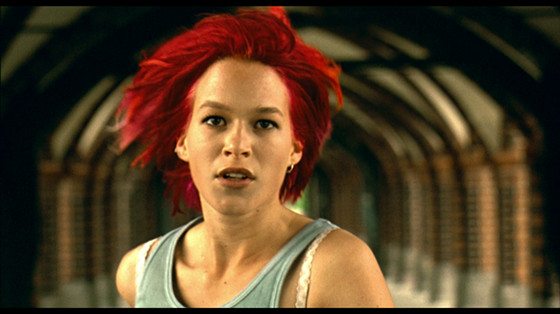
It may seem odd to single out a single scene from Run Lola Run as when you get down to it the film is basically just the same scene being repeated three times.
It does this to great effect, but there is something undeniably special about seeing the scenario play out for the first time. The fast pace, brilliant direction, convincing performances and terrific performances are all on display but at this point we are witnessing it all for the first time.
The story follows a woman who needs to obtain 100,000 Deutsche Mark in twenty minutes to save her boyfriend’s life. The simple set up allows three different scenarios to play out each with differing results. But within the second and third run we are impressed by the subtle and carefully placed variations of each scenario, but within the first we are glued to the edge of our seats, unsure of where the plot will go next.
As well as that you have the brilliant breaks in structure that help draw attention to the unique potential of cinema. Moments such as the brief animated section, the tiny snapshots we see of each minor player’s future and the sheer inventiveness of how the whole story is presented. Not only is it a thrilling scene but it’s an intelligent, humorous and fourth wall breaking marvel.
5. Meeting Dr Lector in The Silence of the Lambs
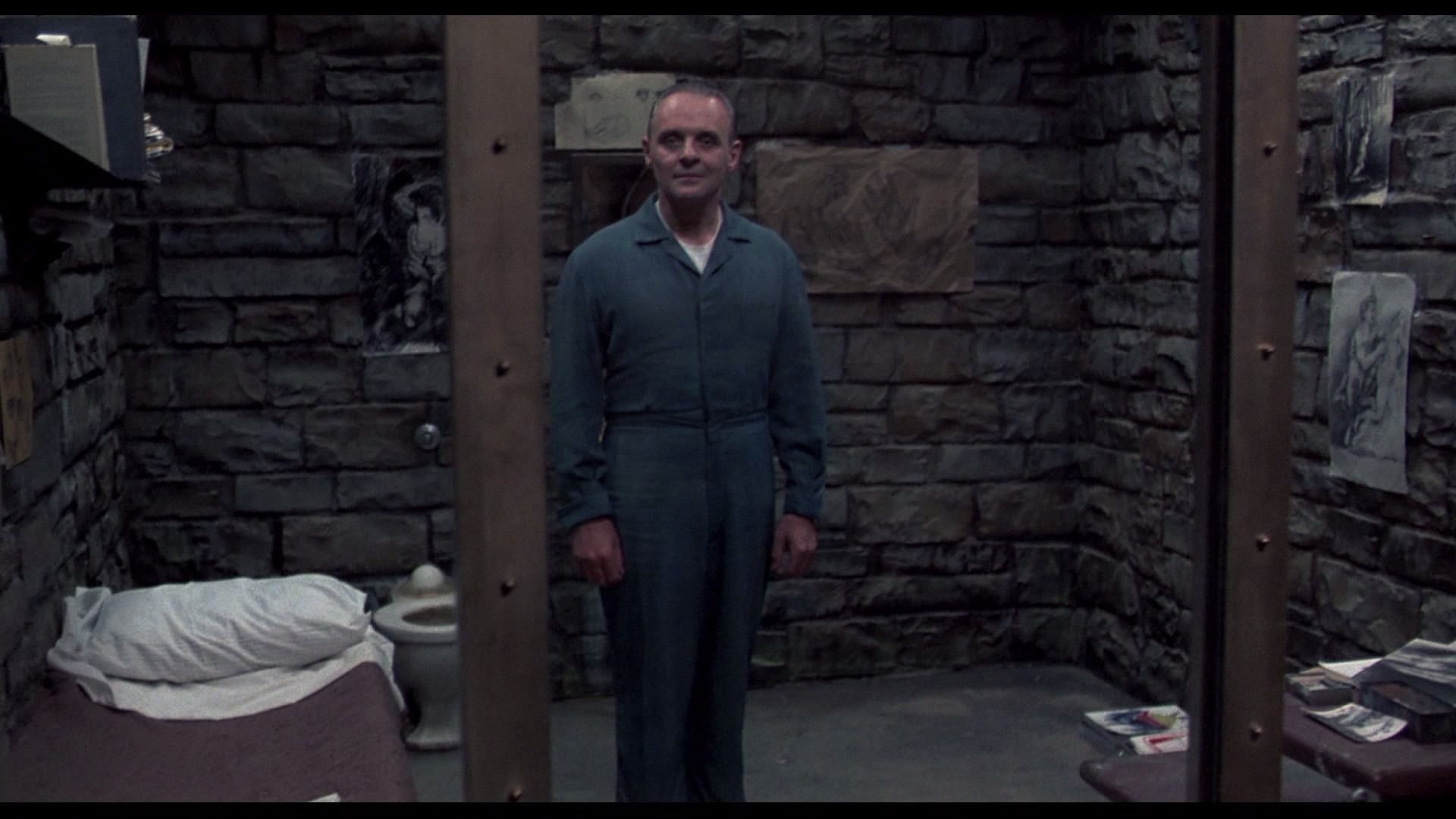
It may be a simple conversation but the interactions between Clarice Starling (Jodie Foster) and Hannibal Lector (Anthony Hopkins) that form the framework of The Silence of the Lambs are as thrilling and as enthralling as any duel or fight scene from the decade. In order to gain a psychological profile and possibly some insight into a wanted serial killer, Starling is sent to visit the infamous Dr Lector and their first encounter may be their best.
Right from the start the scene invokes an eerie presence with Hopkins’ cool stillness. Having been built up to an anticipatory state with tales of Lecter’s horrific crimes the last thing we expect is a stance of such eerie calmness.
Foster’s own attempts to remain calm and collected in the face of this psychopathic killer evoke empathy and investment, and their simultaneous interrogation as Lecter attempts to unravel the psyche of the FBI agent while Clarice attempts to reason with the caged cannibal makes it equally engaging.
As soon as Clarice and Lector meet Demme’s camera establishes them as equals with two close-up shots, one of them may be behind glass but as far as the camera is concerned they are on level ground. Most of their conversations are filmed in that style to let us see every flinch, every detail of their faces in the best possible attempt to penetrate each character’s mind. It is that kind of directing that makes the scene masterful, and combined with the amazing performances it is absolutely breath taking.
4. Hamburgers in Pulp Fiction
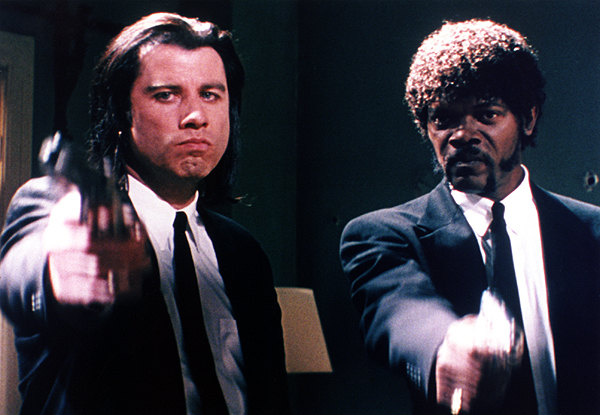
With a catalogue of memorable scenes not just in his entire career, but from Pulp Fiction alone it was hard to choose any one scene from Quentin Tarantino’s iconic tale of the interwoven stories of mobsters and hitmen on the streets of Los Angeles. But arguably the best is the moment Jules Winfield (Samuel L Jackson) and Vincent Vega (John Travolta) enter the apartment of one of their targets to procure a stolen briefcase.
From the moment Jackson steps onto the set his acting dominates the scene, becoming the central force that drives it. He retains complete control of the scene, appearing humorous and intimidating at the same time and with every movement. Even taking a bite out of a burger becomes at once both hilarious and unusually threatening.
As he struts around the scene, meticulously instructing everyone to resume their prior seating arrangements, we can’t help but feel threatened. A man in this much control has to have some higher plan on how to handle the situation.
Of course, Jackson really does. The fact that John Travolta sits back quietly as the scene unfolds only makes us more receptive to what Jules will unleash next. What he does unleash is an amazing monologue that despite being named as a bible passage is actually just pure Tarantino monologue. Put when it as prophetic and as dramatic as this, as well as being delivered with as much conviction that Jackson does, makes it truly incredible.
3. What’s in the Box in Seven
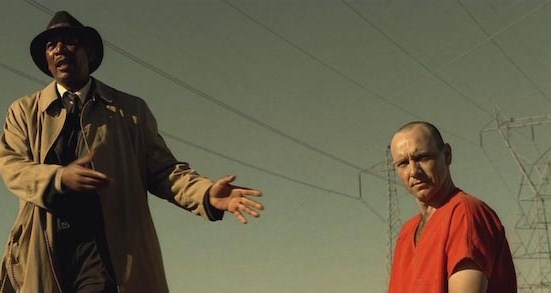
One of the most shocking and disturbing endings of all time, Seven’s climactic scene is not just a random shot in the dark, it is the culmination of several perfectly placed clues that indicate towards this dramatic conclusion.
What makes it so brilliant is the way that, like John Doe, David Fincher has forced his audience into a corner, forcing them to confront this revelation and accept it as the truth not just because we see it but because it makes perfect logical sense. In the tale of two detectives chasing down a serial killer murdering people based on the seven deadly sins they now join him in the desert where he promises to fulfil on his promise and deliver his last two victims.
The result is that a package arrives, addressed to detective Mills (Brad Pitt) and within the package is the severed head of wife who is also revealed to have been pregnant. Doe having killed Mills’ wife out of envy and Mills then killing Doe to incite wrath, completing the seven deadly sins.
The shock value of the ending led to the studios to try to change it with several alternative suggestions from having detective Somerset kill Doe instead, to the climax being changed in which the detectives have to race against time to save Mills wife or, more laughably, the big reveal be that the severed head belongs to Mills’ dog which surprisingly doesn’t carry the same dramatic impact.
Instead Fincher (fresh from his studio dominated nightmare that was Alien 3) prevailed and we are all the more relieved to hear it. As the scene spirals out of control, manipulating and destroying any psychological expectations and delivering a soul tearing final twist, Fincher directs with and eye that emphasises every aspect of it.
Then there are the performances such as Kevin Spacey’s calm smugness that is somehow even more disturbing. We also have Morgan Freeman’s shocked reaction to the reveal and futile attempts to hold everything together to Brad Pitt’s sheer disbelief at what is unfolding. Fincher even resorts to a close up shot to capture in detail the exact moment the news registers with him. The editing is also superb, with each new cut punctuating Howard Shore’s incredible score.
2. Car Crash in Three Colours: Blue
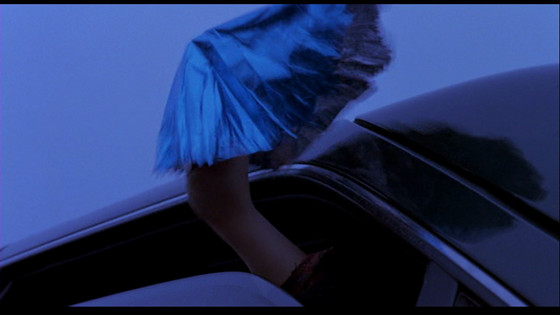
A masterclass of visual storytelling on the purest and most perfect level. The opening of Krzysztof Kieslowski’s first film of his acclaimed trilogy, Blue, sets the plot in motion expertly, with no clunky expositional dialogue or obvious methods of dialogue to convey the information to the audience. Instead Kieslowski employs a string of beautifully composed and perfectly placed images that establish every major factor and plot point that leads to the event that initiates the whole story of the film.
Set in Paris, the film is about a woman whose husband and child are killed in a car accident. Suddenly set free from her familial bonds, she attempts to cut herself off from everything and live in isolation from her former ties, but finds that she can’t free herself from human connections. In order to start this story the audience needed to get a clear insight into why this event happened and with a series of deceptively simple snapshots Kieslowski does just that.
Each shot is magnificently filmed, stunningly captured by cinematographer Sławomir Idziak as a stunning way of perfectly conveying each individual aspect of the story. None of the shots overtly spell the scenario out to you but none of them leave you confused over what it happening. The series of shots are beautiful, emotional and ultimately brutal and the rest of the film is all the better for it.
1. Omaha Beach in Saving Private Ryan
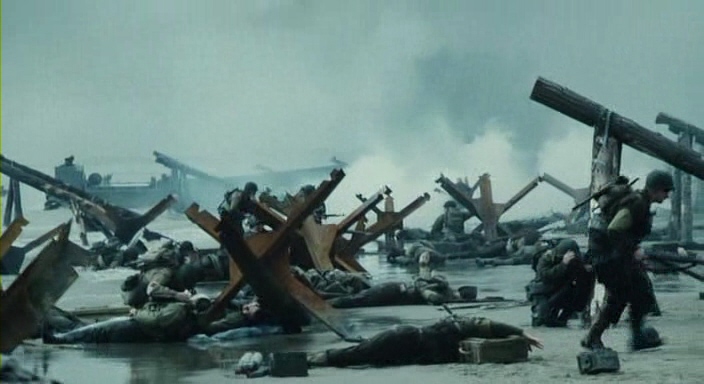
Sometimes the most effective scene is one that gets your blood pumping and adrenaline rushing. However a few special scenes can do that and so much more. They can be an insight into history, a glimpse of the human condition and effect you in the most profound way imaginable.
When Steven Spielberg wanted to recreate the D-Day landings he wanted so stay as far away as possible from making the scene look “Hollywood”. He wanted to create a visceral, bombastic and terrifying scenario that would accurately capture exactly what the soldiers of World War 2 experienced.
The result is a scene that is both massive and intimate in scale. Just the build up to it is electrifying, we know these vomiting, shivering and apprehensive men are scared (a far cry from the usual brave and bold farce too many movies try to cram down audience’s throats).
When the slaughter begins it is more destructive and damaging than any audience member could have imagined, to see boat load after boat load of men being mown down by gunfire in such quick succession is a nerve shredding image to be confronted with and structure of each shot goes far beyond that.
The detail of every single shot is laid out in front of our eyes, each one conveying a new horror associated with war. From the dismembered bodies to the fiery explosions everything is designed to transport you to the beaches of Normandy in 1944. On paper the scene seems so chaotic but remember this is Spielberg we are talking about, there is a glorious sense of rhythm to the scene, from its sound design to its composition and even the editing of each new shot.
It creates a sense of chaos and confusion but at no point are you completely flustered as to where everything is, whether that be down to the simple layout and established stakes of the scene (one side has to get across the beach, that is the objective set out straight away) or an even higher sense of organisation and composition we have yet to notice.
Then you have the perspective of the scene, as the viewpoint darts back and forth from each vantage point. Sometimes we are members of this destructive battle, sometimes onlookers but either way we are always part of it. The fact that is all serves the overall plot, characters and action only makes it more admirable and that is why we think it’s the greatest scene of the 1990s.
Author Bio: Joshua Price considers himself more of a fan that happens to write near insane ramblings on movies and directors like Scorsese, Spielberg, Bergman, Kubrick and Lumet rather than an actual critic and other insane ramblings can be found criticalfilmsuk.blogspot.co.uk.